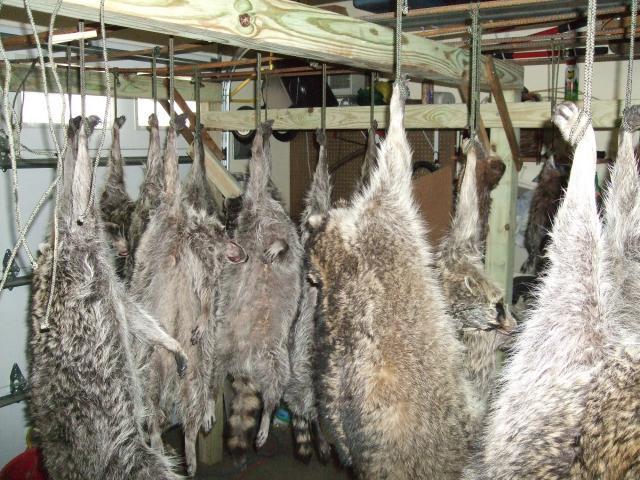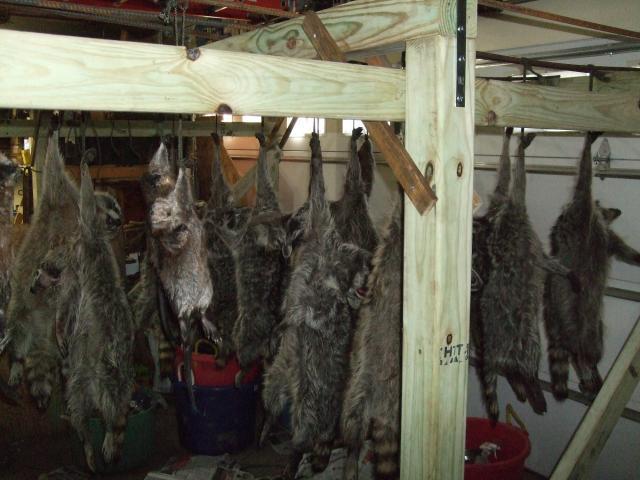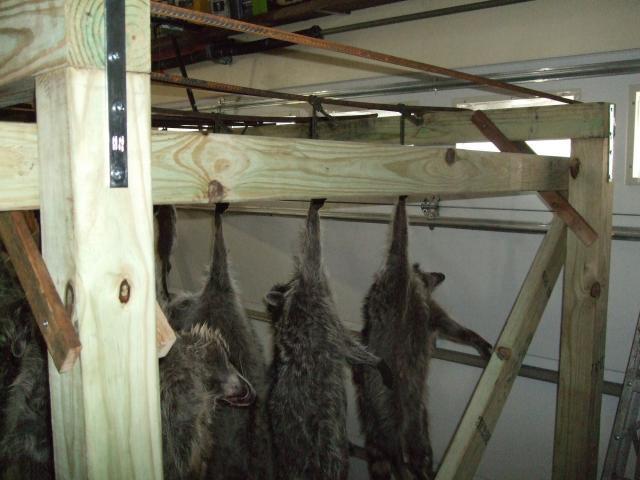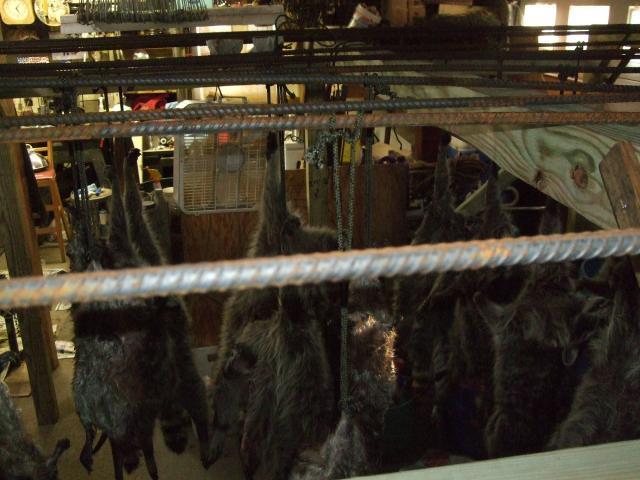For the water trappers . . .
Drying critters prior to skinning can be troublesome at times, especially if you're racking up big numbers. And especially if you've got the critters at the end of a drowning system for a couple of days. They're soaked.
My "fur shed" is the double garage attached to the house. The drying area becomes a one-car garage when not in use. But for the river boat line, it comes in very handy to have this extra space.
You'll see colored tubs under the drying rack. These have 3/8" holes drilled in the bottom to allow water to drain through. It's important, if you toss wet critters into a tub, that the tub has a way of draining off water. That really helps. No problem pulling the plug on the boat occasionally while planing to get rid of excess water in the bottom.
I've built a small "cart", just a square of 3/4" plywood with nice casters on the corners. There's a rope attached to one side to allow for easy pulling. When I pull up to the driveway, this cart has another tub on it and I wheel that down to the boat on the trailer. Grab critters out of the tubs in the boat and toss into the tub on the cart and pull up into the garage. As one gets older, one needs to find other ways of doing the repeated big lifting.
After skinning the previous day's catch that night, I use the same tub/cart to pull carcasses out to the boat and load into the bow for disposal the next day. The bow has a thick sheet of plastic in the bottom for this purpose that keeps the yucky stuff from seeping down the grooves of the runners to the stern. Also if it freezes that night, the carcasses aren't stuck to the floor of the boat. Once carcasses have been disposed of back in the bottoms, the plastic sheet can be washed off, folded up, and stored in a bucket behind the back seat.
Back to drying the critters. The big Sears shop vac comes out and I shop vac each one. This really helps to get the water out. Then each critter is hung by the front foot from the drying rack. Important to hang from the front foot, as this allow water to flow away from the body. This is my opinion, and have seen fellas here state they hang theirs from the hind foot. Whatever works.
The drying rack is 4x4s and 1/2" rebar. It assembles quickly, and can hold many, many critters at one time. Newspapers line the floor below and are recycled every couple of days. Once the river boat "season" is done for me, I take this apart and is easily stored along one wall. Winter catch is mostly 'rats, mink and beaver and are suspended from the same 1/2" rebar back in the fur shed area and don't take up that much room on a day to day basis.
This works for me. Maybe it will give some of you some ideas on how to deal with large numbers of wet critters at a time.










![[Linked Image]](https://trapperman.com/forum/attachments/usergals/2018/11/full-28801-429114-base.jpg)